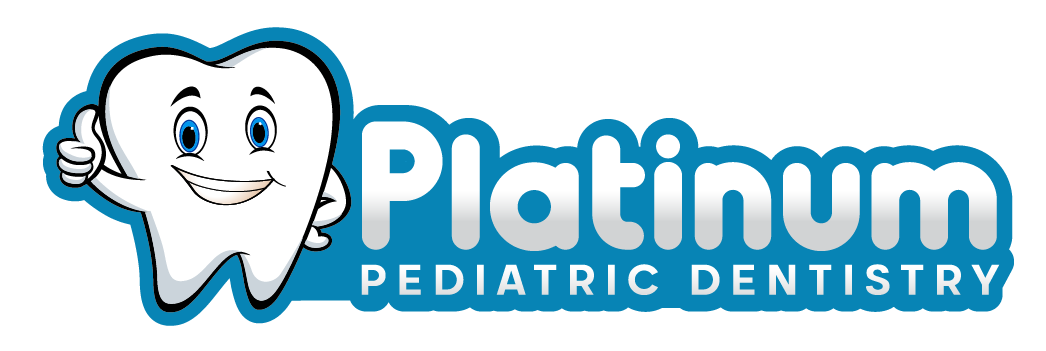 Learn the role of pediatric dentists in interceptive orthodontics. Early intervention prevents severe dental issues in Long Island children.
Learn the role of pediatric dentists in interceptive orthodontics. Early intervention prevents severe dental issues in Long Island children.Interceptive orthodontics is a critical early step in preventing and correcting dental issues in children before they become more severe. At Platinum Pediatric Dentistry, our pediatric dentists play an essential role in identifying and treating orthodontic issues early, guiding the proper development of your child’s teeth and jaw. Long Island parents often wonder when and how their child’s orthodontic care should begin, and the answer lies in interceptive orthodontics, which allows early intervention for better dental outcomes.
What is Interceptive Orthodontics?
Interceptive orthodontics refers to the early identification and treatment of orthodontic issues in children. It is usually done while the child is still growing, typically between ages 6 and 12, before permanent teeth fully develop. By addressing issues early, pediatric dentists can prevent more serious problems such as misalignment, crowding, or bite issues that could require more intensive treatment later in life.
This proactive approach sets the foundation for healthy, well-aligned teeth, saving children from more complex orthodontic work, like braces or surgeries, as they grow older. Long Island parents often turn to pediatric dentists for this early-stage treatment, knowing that interceptive orthodontics can make a huge difference in their child’s dental health.
The Role of a Pediatric Dentist in Interceptive Orthodontics
Pediatric dentists are uniquely qualified to monitor the development of your child’s teeth and jaw, spotting potential problems early. At Platinum Pediatric Dentistry, our pediatric dentists are trained to assess your child’s orthodontic needs through regular check-ups and dental exams. With an understanding of dental growth patterns and the ability to anticipate future issues, pediatric dentists play a critical role in interceptive orthodontic care.
How Pediatric Dentists Detect Orthodontic Issues Early
The first step in interceptive orthodontics is identifying potential issues. Pediatric dentists look for signs such as:
- Crowded or misaligned teeth
- Overbites or underbites
- Jaw growth problems
- Early or delayed loss of baby teeth
- Thumb sucking or other habits affecting dental development
These indicators can suggest future orthodontic problems, and early detection allows for timely intervention. Pediatric dentists use tools like dental X-rays, molds, and visual exams to assess the position and health of a child’s developing teeth.
Preventing More Extensive Orthodontic Treatment
Interceptive orthodontics works by addressing issues in their early stages, which can prevent the need for more extensive treatments like braces or surgeries. For example, if a child has a narrow palate, a pediatric dentist might recommend a palate expander to correct the problem before it leads to severe crowding or alignment issues.
Similarly, if a child loses a baby tooth prematurely, the pediatric dentist may use a space maintainer to ensure proper spacing for permanent teeth. This kind of early intervention reduces the risk of future complications and helps children avoid discomfort down the line.
Common Interceptive Orthodontic Treatments
Several interceptive treatments are used to guide dental development in children. These may include:
- Palate expanders: Used to widen the upper jaw and correct crossbites or crowding.
- Space maintainers: Placed when a child loses a baby tooth early, preserving space for permanent teeth.
- Partial braces or aligners: In some cases, pediatric dentists may recommend partial braces or early orthodontic aligners to correct minor misalignments.
- Habit appliances: Devices used to stop habits like thumb sucking that can affect dental development.
When Should Your Child See a Pediatric Dentist for Interceptive Orthodontics?
Long Island parents often wonder when the right time is to start thinking about orthodontics for their children. According to the American Association of Orthodontists (AAO), children should have their first orthodontic evaluation by age 7. This is because many orthodontic problems can be detected even before all permanent teeth have erupted.
At Platinum Pediatric Dentistry, we encourage parents to bring their children for regular dental checkups starting at a young age. During these visits, our pediatric dentists can monitor the development of your child’s teeth and identify if and when interceptive orthodontic treatment might be necessary.
The Benefits of Early Orthodontic Care for Long Island Families
By opting for interceptive orthodontics with a pediatric dentist, Long Island families can ensure their children have the best opportunity for healthy, straight smiles. Early intervention minimizes the need for more complex treatments in the future, such as full braces or corrective surgery. It also:
- Reduces the duration of orthodontic treatment later in life
- Improves oral function and health
- Boosts a child’s confidence with early dental correction
- Lowers the risk of cavities and gum disease by addressing misalignments
Pediatric Dentistry and Long-Term Orthodontic Success
Interceptive orthodontics not only helps prevent severe dental issues but also sets the stage for long-term orthodontic success. Children who receive early orthodontic care are more likely to have shorter, less intensive treatments as they grow older. Furthermore, early treatment can improve the child’s ability to chew, speak, and maintain a healthier smile.
Q & A Summary
Q: What is interceptive orthodontics?
A: Interceptive orthodontics is the early identification and treatment of orthodontic issues in children before they develop into more serious problems.
A: Interceptive orthodontics is the early identification and treatment of orthodontic issues in children before they develop into more serious problems.
Q: Why is a pediatric dentist important in interceptive orthodontics?
A: Pediatric dentists are trained to detect early signs of orthodontic issues and implement preventive measures to guide proper dental development.
A: Pediatric dentists are trained to detect early signs of orthodontic issues and implement preventive measures to guide proper dental development.
Q: When should my child see a pediatric dentist for orthodontic evaluation?
A: The American Association of Orthodontists recommends that children have their first orthodontic evaluation by age 7, but regular pediatric dental checkups can identify issues earlier.
A: The American Association of Orthodontists recommends that children have their first orthodontic evaluation by age 7, but regular pediatric dental checkups can identify issues earlier.
Q: What are common interceptive orthodontic treatments?
A: Common treatments include palate expanders, space maintainers, partial braces, and habit appliances.
A: Common treatments include palate expanders, space maintainers, partial braces, and habit appliances.
Conclusion
Interceptive orthodontics is a proactive approach to your child’s dental health, and pediatric dentists play a crucial role in identifying and addressing orthodontic issues early. Long Island parents, especially in West Hempstead and Garden City, should consider interceptive orthodontics as part of their child’s regular dental care to prevent more extensive treatments down the road. By working with a pediatric dentist, you can ensure your child has a healthy, beautiful smile for life.
For more information, visit www.platinumpediatricdentistry.com or consult with the American Academy of Pediatric Dentistry (AAPD) and the American Association of Orthodontists (AAO).
